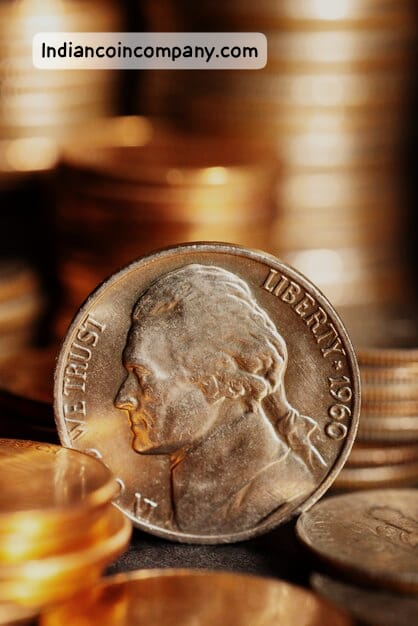Ancient Coins of India ,In the 6th century BC to 400 BC, the Indian subcontinent was divided into 22 different Janapadas, and each Janapada issued its own coins. Ancient Indian coins issued by Gandhara Janapada are considered to be some of the oldest coins in the world. These were rectangular silver coins with a six-armed symbol on each end of one side. The other side of these ancient Indian coins was left blank. These historical coins were minted using stamping techniques. Among the empires and kingdoms of ancient India, the Gupta Empire issued some of India’s finest coins between 320 and 550 AD. In South India, the Chola, Chela, Pandya and Pallava dynasties were among the most powerful dynasties and also minted various types of ancient Indian coins. Then came the coins of ancient invaders such as Greco-Bactrians, Indo-Greeks, Indo-Scythians, Kushans, and Indo-Parthians. These amazing coins show the unique culture and traditions that these invaders followed.
Medieval India Coins:
When we talk about Indian coins, no one ignores the wonderful coins issued by powerful and legendary emperors like Akbar, Shivaji Maharaj, and Tupu Sultan. Medieval Indian coins can be broadly divided into five groups. Coins issued by Sultans, Mughals, independent kingdoms, princely states, and Hindu kingdoms. Persian legends were depicted on coins issued by the Sultans and the Mughals. These included beautiful poems such as those published by Mughal Emperor Jahangir. The coins issued by Shivaji Maharaj were called Shivrai. The introduction of a new sect at a time when the Mughal Empire was extremely powerful is considered a major achievement. At the coronation of Shivaji Maharaj, a special Shivrai coin was minted in gold. These gold coins are extremely rare and are sold at auction houses around the world.
Colonial India Coins:
After the decline of the Mughal Empire, several European powers began to exploit trade opportunities in India. The most successful of them was the British East India Company, which gradually began to assert its power and eventually India was declared an official colony of Britain. Initially, Indian coins were issued by the East India Company for various circuits such as the Bengal Presidency, the Bombay Presidency, and the Madras Presidency.

After the 1857 Rebellion, British India coins were officially issued under the Queen’s reign. These wonderful colonial coins had a portrait of the queen or king on one side and the face value and year of issue on the other. Apart from the British East India Company, several trading companies such as the Dutch East India Company, Danish East India Company, French East India Company, and Portugal also issued different types of coins in India.
Republic India Coins:
Finally, Republic of India coins are coins issued by the Indian government after independence in 1947. The old coins of British India remained in circulation as frozen currency until 1950 when the first Republic of India coins were issued. These Indian coins belonged to the Anna series. Some of them are cast in different shapes, such as square or wavy. The introduction of decimal coins took place in 1957, after which for a short period he decimal coins and his pre-decimal coins circulated together. Two-part coins issued between 1957 and 1964 were stamped “Naya Paisa” to distinguish them from coins of the same denomination issued earlier.
The history of Indian coins is so vast that it is impossible to know everything at once. Select a category and have to dig deep into it, covering one dynasty/kingdom at a time. Following these steps will help you learn more about our glorious past.

Simplify your research on Indian coins by easily exploring the broad categories of Indian coins. If you want to seriously learn about Indian numismatics, this article is the perfect introduction. Understand the basics of Indian coins so you can systematically study the myriad types of coins.
Why collecting Indian coins is the most satisfying hobby
Stress has become an important part of our lives, and everyone likes to pursue hobbies and activities that relieve tension. Some people like to draw, some like to sing, and some like to play sports. Coin collecting is one of the few hobbies that not only brings joy to life, but also expands your general knowledge. By learning about Indian coins, children can learn a lot about India’s glorious past. When you hold a piece of history like an Indian coin in your hands, you can experience a different kind of emotion. This activity is far better than rummaging through history books just to get good marks in exams.
There are numerous types of Indian coins, each with its hidden historical significance. Since ancient times, various janapadas such as the Gandhara Janapada, Mauryan Janapada etc. minted fine Indian coins. If you own an Indian coin minted during the Gupta period, you can learn some interesting facts about the golden age of Indian history. Even in the Middle Ages, great kings and emperors like Shivaji Maharaj and Akbar minted some amazing coins of India. By reading and studying the inscriptions on these coins, it is possible to analyze the chronology of historical events and the succession of kings within the kingdom. It also provides insight into the cultural, traditional, and religious influences associated with specific eras, regions, and dynasties. Understanding Indian coins and collecting Indian coins is the best way to learn about the rich diversity of our culture.
There are many other benefits of collecting coins. For example, if you have valuable and rare coins from India in your collection, you can earn additional income by selling them through online auctions. Additionally, you will have the opportunity to get in touch with other experts in the field of numismatics and experienced collectors and expand your knowledge of Indian coins. There’s no need to waste any more time thinking about starting a new hobby. There is nothing better than collecting coins from India.